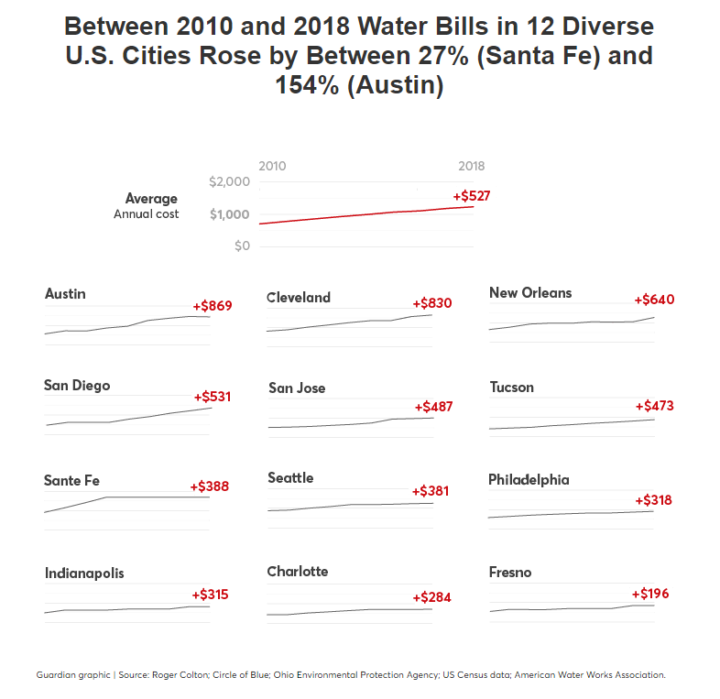The American Rescue Plan Act (ARPA) provides large direct payments to local governments to address the fallout from the COVID-19 global pandemic and its economic ramifications. The federal government is providing these funds with far fewer restrictions than in the previous pandemic aid package, the CARES Act.
Your local government can use the funds not just to stock up on emergency supplies or make up for lost sales tax, but instead can deploy the funds to address the wide range of gaps in the social safety net that were exposed by the pandemic.
We’ve crunched the numbers, reviewed the rules, and talked to organizers and advocates in cities and counties across the country. Here is the first in an ongoing series helping us expand our collective policy imagination to take full advantage of this opportunity to reimagine the role local government can play in our lives.
- Give essential workers a raise
- Pay the rent
- Support your schools (the LeBron way)
- Eliminate water debt
- Provide grief and trauma counseling
1. Give essential workers a much-deserved bonus
This one’s simple. Give bonuses to grocery store workers, home health aides, hospital orderlies, janitors, cleaners, and other essential workers who kept showing up in-person for their jobs while many of us were fortunate enough to work from home.
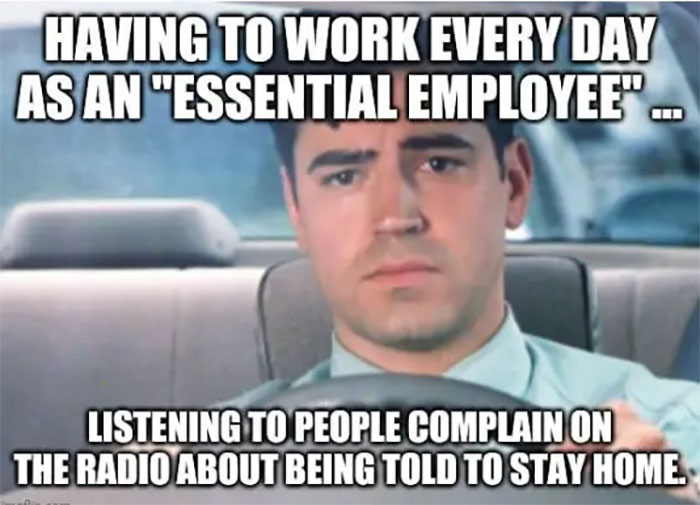
ARPA lists four broad permissible use of funds and one is providing premium pay for essential workers (and this pay can be awarded retroactively for service during the past 12 months). Aid can be used to provide additional pay up to an extra $13/hour and up to $25k per worker. Funds can be used not just for government workers but also passed on to private employers for this purpose. Did you know only 20% of healthcare workers are doctors or nurses (Kinder 2020)? An extra $13 an hour would double (even if temporarily) a lot of essential workers’ hourly pay.
As a bonus, these programs are easy to administer, put money in the pockets of the community, and publicly acknowledge the sacrifice and hustle that kept our communities on life support during the crisis. In most communities ARPA aid would be more than enough to cover meaningful bonuses for these essential workers and leave plenty of funds left over for the other ideas on this list.
2. Keep people in their homes
In some cities, as many as 1 in 10 renting households are evicted each year. Nationally, 2 to 3% of renters, nearly a million households, are evicted annually (Eviction Lab, n.d.; Brancaccio and Long 2018).* Many households are evicted for less than $600 of unpaid rent; the median amount owed is around $1,200 (Badger 2019). During the pandemic, a nationwide eviction moratorium banned evictions (with some caveats), though evictions still continued to varying extents in different cities. Some estimates suggest that, when the eviction moratorium ends, as many as 11 million households may be behind on rent (Capps 2020).
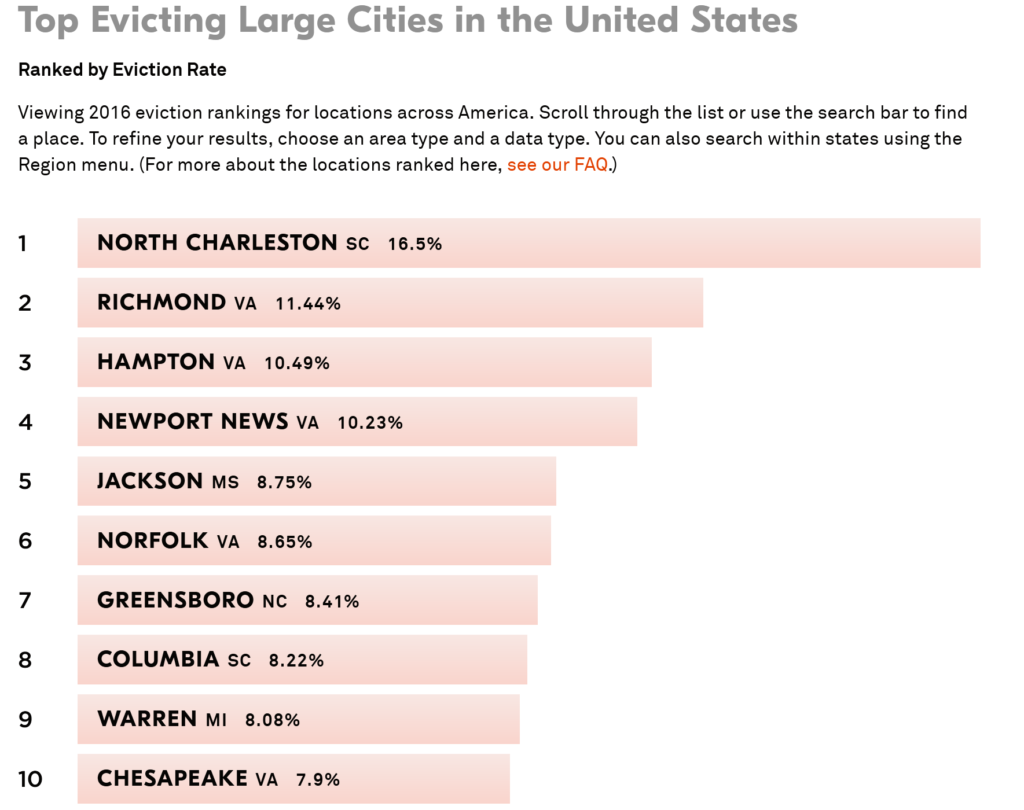
One solution: Pay off rent debt owed. Help people start fresh.
Let’s take Richmond as an example for a back-of-the-envelope calculation. In 2019, Richmond had 8,451 formal evictions. Let’s assume the median amount owed was $1,259, the median for Virginia in 2020 (RVA Eviction Lab Staff 2021). That’d be about $10.6 million to wipe out rent debt for everyone likely to be evicted from Richmond in a year. That’s less than one-tenth of the ARPA aid Richmond is estimated to get!
Affordable housing is a huge issue that will require many complementary strategies to solve. Looking longer-term, laws and policies addressing different stages of the eviction crisis, from decreasing evictions to lessening the severity of an eviction, can make a big difference (Rogers and Demarest 2019), and increasing the supply of low-cost and affordable housing is clearly important as well.
You can find out how much rent debt impacts your community with this dashboard from PolicyLink:
But cities could help those who need it now, avoid a preventable wave of homelessness, and give residents the time and break they need to get back on their feet while also looking to the future. Check out Philly’s example taking advantage of the prior pandemic aid! Working with housing nonprofits, Philly was able to disperse $61.8 million in CARES Act rental assistance and start an Eviction Diversion Program.
3. Learn from LeBron
LeBron James is good at many things, and one of them is helping at-risk, struggling students succeed.
Everyone should read (or reread!) this article about LeBron’s I Promise School, which educates some of Akron’s most at-risk third through sixth graders. Part of Akron Public Schools, the I Promise School meets students’ basic needs (uniforms, transportation, meals) and provides year-round social services and resources for families, including a food pantry and GED and job placement services.
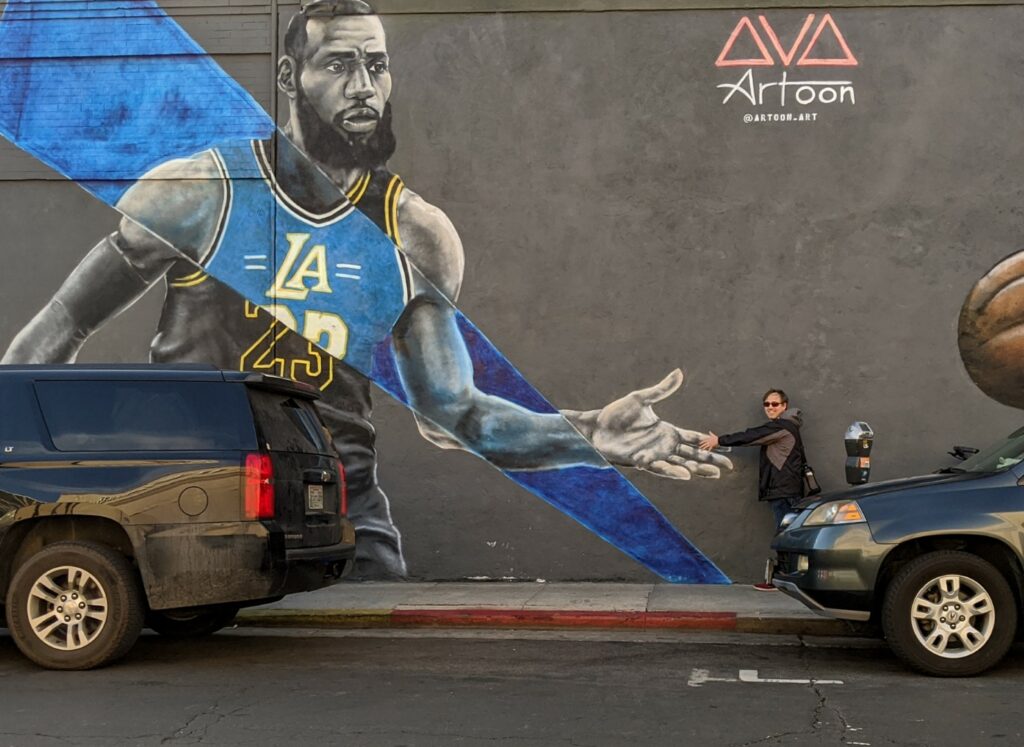
What’s perhaps most inspiring about LeBron’s approach is that, in addition to building on prior family- and community-centered models like the Harlem Children’s Zone, it seems to be truly rooted in listening and responding to participants’ challenges and issues. For example, after learning that some students were struggling at school due to housing instability, the foundation launched I PROMISE Village to provide rent-free transitional housing. Then the Foundation announced plans for a 50-unit affordable housing project and giant community center.
Early results for the I Promise School are very promising indeed, with students’ test scores increasing much more than their peers’ and praise coming from both sides of the ideological spectrum (Poiner 2019; Spauster 2018). So give the money to LeBron! Or at least follow his lead.
Your community could adopt the I Promise model by investing in community initiatives that provide the wraparound services your local schools and the families they serve need. This could involve setting up a nonprofit that collaborates with your schools to adapt and provide resources in response to changing unmet needs of students and families. Or you could fully fund and support existing community nonprofits like a Boys and Girls Club to scale up and support all of the families in your schools.
4. Wipe out water debt
One member of the Civilytics staff frequently grouses about our office water bill. Why is it so high!? But at Civilytics we’re just complaining. Across the country, people seriously struggle to pay for a basic necessity: clean running water.
Between 2010 and 2018, the cost of water and sewer increased by an average of 80%, or $527 a year, across 12 diverse cities (Lakhani 2020b, 2020a). A 2016 study found that 1 in 20 households had their water shutoff due to nonpayment (Food & Water Watch 2018). Rising costs are driven by declining federal aid, aging infrastructure, deferred maintenance, and costs to comply with safety and environmental standards.
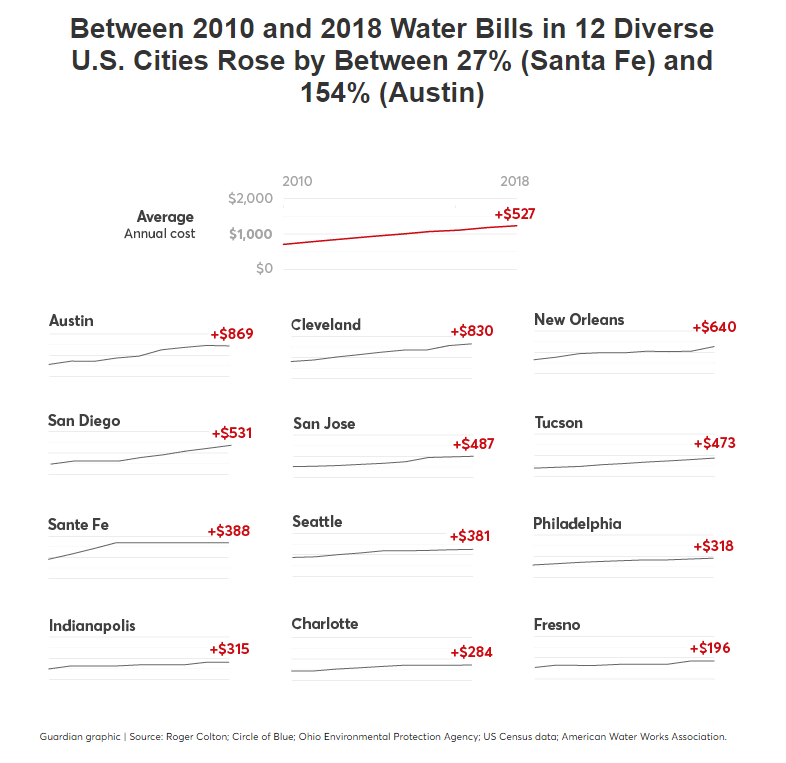
Longer-term we hope President Biden’s infrastructure bill will help address the problem of water and sewer affordability. But in the immediate term, we’re inspired by the Detroit Water Project/Human Utility, a nonprofit (501c3) started to get people’s water turned back on by helping with their bills. We’ve been monthly contributors for the past 18 months or so and encourage you to consider donating as well.
Paying off water debt with ARPA funds is a simple thing to do, will cost only a fraction of the total aid allowance, and will allow people to wash their dishes and flush their toilets while cities move forward to address the structural imbalances and rising costs of water from a solid financial footing. So cities: why not use ARPA money to start upgrading your sewer system and pay off delinquent water bills at the same time?
5. Provide public trauma and grief counseling and support
Even before COVID-19, the U.S. had a mental health care crisis, with millions of Americans reporting an unmet need for mental health services (Altiraifi and Rapfogel 2020). Now COVID has wreaked havoc on people’s physical and mental health. Over 560,000 Americans have died from COVID (with the number still climbing of course). It was the third leading cause of death in 2020, behind only heart disease and cancer (Ahmad and Anderson 2021). And even for those who were spared the worst heartache, three times as many Americans as usual report being anxious or depressed (Centers for Disease Control and Prevention, n.d.).
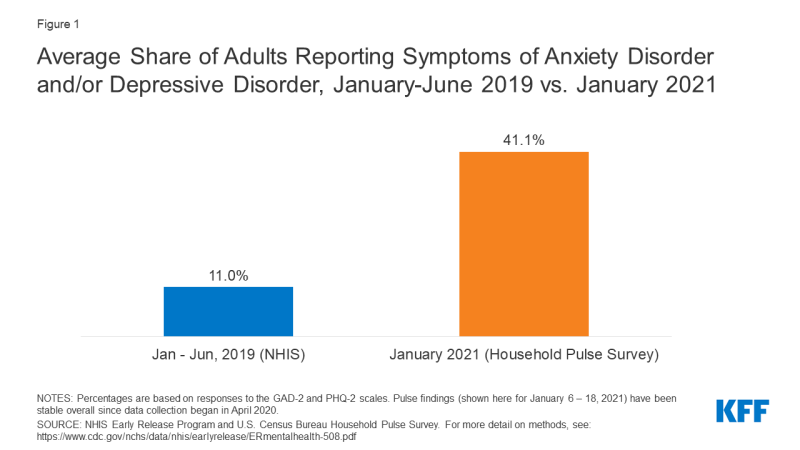
Many of the things that make grieving a little less hard – being able to visit loved ones in the hospital, having friends and family by your side, having time to process what’s coming – were impossible during the pandemic. When things go back to the “new normal,” there will still be an epidemic of COVID-caused grief and stress (Reja 2021).
So what about using ARPA funds to supports to ensure access to mental health treatment? Local governments could guarantee every member of their community who wants counseling three sessions with a mental health provider and a fourth session with a social worker to try to find longer-term care when needed. ARPA aid allows for a transfer of fund to community nonprofits. Communities could contract with nonprofit mental-health providers to create walk-in hours and issue community vouchers for no-questions-asked, no-bill mental health and grief counseling sessions with qualified and licensed mental health providers, counselors, and social workers.
So what do you think? Would you like to see your local government use ARPA aid for any of the above? Do you have other ideas for ways local governments could take advantage of these funds to reimagine community supports? Send us your ideas and any instances of your local government discussing creative possibilities! We’d love to hear and may feature in a second installment of this series next month
- *The Eviction Lab has tons of great data and resources on both the national eviction crisis and which cities rank highest in evictions. The 2018 Marketplace interview with the Eviction Lab founder and MacArthur genius grant winner Matthew Desmond is also worth revisiting.
- Ahmad, Farida B., and Robert N. Anderson. 2021. “The Leading Causes of Death in the US for 2020.” JAMA, March. American Medical Association (AMA). doi:10.1001/jama.2021.5469.
- Altiraifi, Azza, and Nicole Rapfogel. 2020. “Mental Health Care Was Severely Inequitable, Then Came the Coronavirus Crisis.” Center for American Progress. September 10. https://www.americanprogress.org/issues/disability/reports/2020/09/10/490221/mental-health-care-severely-inequitable-came-coronavirus-crisis/#fn-490221-18.
- Badger, Emily. 2019. “Many Renters Who Face Eviction Owe Less Than $600.” The New York Times. December 12. https://www.nytimes.com/2019/12/12/upshot/eviction-prevention-solutions-government.html.
- Brancaccio, David, and Katie Long. 2018. “Millions of Americans Are Evicted Every Year — and Not Just in Big Cities.” Marketplace. April 19. https://www.marketplace.org/2018/04/09/eviction-desmond-princeton-housing-crisis-rent/.
- Capps, Kriston. 2020. “U.S. Renters Could Owe $70 Billion.” Bloomberg CityLab. December 10. https://www.bloomberg.com/news/articles/2020-12-10/u-s-households-may-be-70-billion-behind-on-rent.
- Centers for Disease Control and Prevention. n.d. “Mental Health – Household Pulse Survey.” Centers for Disease Control and Prevention. https://www.cdc.gov/nchs/covid19/pulse/mental-health.htm.
- Eviction Lab. n.d. “The Eviction Lab.” The Eviction Lab. https://evictionlab.org/.
- Food & Water Watch. 2018. “Shocking Study: 15 Million U.S. Residents Had Water Shut Off in 2016.” Common Dreams. October 25. https://www.commondreams.org/newswire/2018/10/25/shocking-study-15-million-us-residents-had-water-shut-2016.
- Kinder, Molly. 2020. “Meet the COVID-19 Frontline Heroes.” Brookings. May. https://www.brookings.edu/interactives/meet-the-covid-19-frontline-heroes/.
- Lakhani, Nina. 2020a. “Revealed: Millions of Americans Can’t Afford Water as Bills Rise 80% in a Decade.” The Guardian. June 23. https://www.theguardian.com/us-news/2020/jun/23/millions-of-americans-cant-afford-water-bills-rise.
- ———. 2020b. “Millions of Americans Can’t Afford Water, as Bills Rise 80% in a Decade.” Consumer Reports. July 10. https://www.consumerreports.org/personal-finance/millions-of-americans-cant-afford-water-as-bills-rise-80-percent-in-a-decade/.
- Poiner, Jessica. 2019. “So Far, LeBron’s I Promise School Is Keeping Its Promise.” Thomas B. Fordham Institute. October 23. https://fordhaminstitute.org/ohio/commentary/so-far-lebrons-i-promise-school-keeping-its-promise.
- Reja, Mishal. 2021. “A Hidden Pandemic: Grief in the African American Community.” ABC News. February 2. https://abcnews.go.com/Health/hidden-pandemic-grief-african-american-community/story?id=75613917.
- Rogers, Woody, and Leah Demarest. 2019. “Comparative Law and Policy Analysis for Addressing Evictions in Richmond, Virginia.” RVA Eviction Lab. October. https://cura.vcu.edu/media/cura/pdfs/cura-documents/ResearchBrief_EvictionLawsandPolicies_Oct2019.pdf.
- RVA Eviction Lab Staff. 2021. “Quarterly Data Report, 4th Quarter 2020: October to December .” RVA Eviction Lab. January 29. https://rampages.us/rvaevictionlab/wp-content/uploads/sites/33937/2021/01/RVAEL_2020-Q4-data-report.pdf.
- Spauster, Patrick. 2018. “LeBron James’s I Promise School Puts a Public Face to the Evidence-Based Approach of Whole-Family Intervention.” Urban Institute. August 14. https://www.urban.org/urban-wire/lebron-jamess-i-promise-school-puts-public-face-evidence-based-approach-whole-family-intervention.


